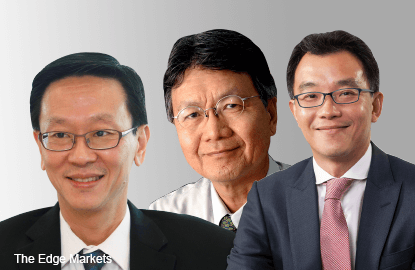
Volatility in markets like China, the US and Malaysia looks set to continue. Investment and financial planning professionals recommend strategies to ride out turbulent times.
5. Have a long-term view
Robert Foo, managing director of financial planning firm MyFP Services Sdn Bhd, says how investors should strategise depends on whether they are currently invested in the markets.

“It all depends on what your current situation is now. When we talk about markets being bad, [we have to state] from which point to which? For those with global holdings — continue being invested. This type of short-term fluctuation is an opportunity for them to average down.
“Over the last three years, some of my clients have been making about 40% [investing] in [things like] ETFs. Now [even though] they have dropped 6% to 7%, they don’t really feel it because the performance of their portfolio is still positive. But if you look at it over the past year, then it’s not such a rosy picture.”
Those who do not have global investments can look for local bargains that will not be affected by the current uncertainties on the political front.
“Since you have all your money in ringgit and the volatility is short term, don’t make drastic decisions and lock in your losses. The market has gone down, so go for local value stocks. But when you do, realise that we have a political situation, and there are many stocks that are politically connected. What if the political situation changes and these stocks are affected? Preferably, don’t go into those counters that are politically linked.”
To ride out the volatility, Foo’s advice is to have a long-term view of the markets.
“We don’t talk three to six months — that’s for gamblers. Long term means five years. Why? Because the typical fluctuation in the equity markets is about five to six years. So, if you’ve just invested for one year, you have got to give yourself enough time so that the economy goes into one full cycle. Three months is too short ... how many actually make money?”
Diversification is key, which what Foo has been advising his clients to do.
“Stay invested, have a long-term view, make sure you are diversified and take opportunities when they come. We have always told our clients to have at least half of their wealth or investment overseas. Malaysia is a small market so you can’t just expose yourself to local investments because you are not capturing the full value of your diversification.”
Gold should be looked at as a vehicle to preserve value instead of a return generator.
“Personally I feel gold is not actually an investment, it’s more a preservation of your value. [Investors can park] maybe 5% of their portfolios but it should notbe looked at as producing a return."
6. Go for gold
Affin Hwang Asset Management Berhad’s (Affin Hwang AM) Gan Eng Peng recommends that investors should exercise caution by limiting their holdings in risky assets.

“If they are conservative and cannot take downside risks, they should definitely be holding a minimum amount of risk assets and judicious amounts of money in hard currencies. If they are high risk and can stomach a sharp fall in assets, they should also have a decent amount (20% to 30%) of cash holdings,” he says.
Alternatively, investors could opt to park their cash in gold, says Gan, who is the firm’s head of equity strategies and advisory.
“Gold is something investors should have in a world of overloaded fiat money. It has not been performing well but investors should think of gold as buying insurance against a failure of the money-printing regime.
“While the risk of such an event happening now seems remote, as the old saying goes, one should buy insurance when they least need it.”
While the fall in the global markets has yet to trigger a crisis, Gan says in view of the unpredictability, the fi rm is in the midst of preparing its portfolios to be able to weather a crisis.
“We would rather err on the side of caution rather than getting burnt. If this is just a recession or slow growth patch, valuation and investor positioning have largely priced in the downside. If it’s going to develop
into a crisis, we have a long way down to go,” he says.
The investment team has reduced its portfolio’s exposure to the market by holding between 35% and 50% cash to cushion it from further capital erosion.
“We continue to advocate our Income Series of funds, which have been built on an optimal asset allocation blend comprising between 60% and 70% of fixed income instruments, and 30% to 40% of equities.
Gan notes that the funds are popular for their lower-risk feature and give investors sufficient market exposure to capitalise on market upsides, and concurrently, exposure to lower risk assets to protect investors’ capital from market volatility while providing regular income.
As a result of the slowdown in emerging market growth expectations, particularly China, he says this suggests a crisis is brewing, although there isn’t one yet in the real economy.
“This is reflected in the sharp falls of commodities and competitive devaluation of emerging market currencies. On a backdrop of years of cheap money and high valuation, the model of government-supported growth is testing its limits.
“We think there will be more positive government policies to improve growth, but after many years of pump-priming, their effects on markets are wearing thinner with each iteration. The consequence of markets
really tipping over into a crisis becomes nearer each time government pump-priming fails.
“We have seen how fast that can be in this recent sell-off. In a real crisis, stock prices can and will fall in excess of 50%,” he adds.
This article first appeared in Money + Wealth, digitaledge Weekly, on Sept 7 - 13, 2015. Click here to subscribe from RM30 for the digitaledge Weekly and digitaledge Daily.